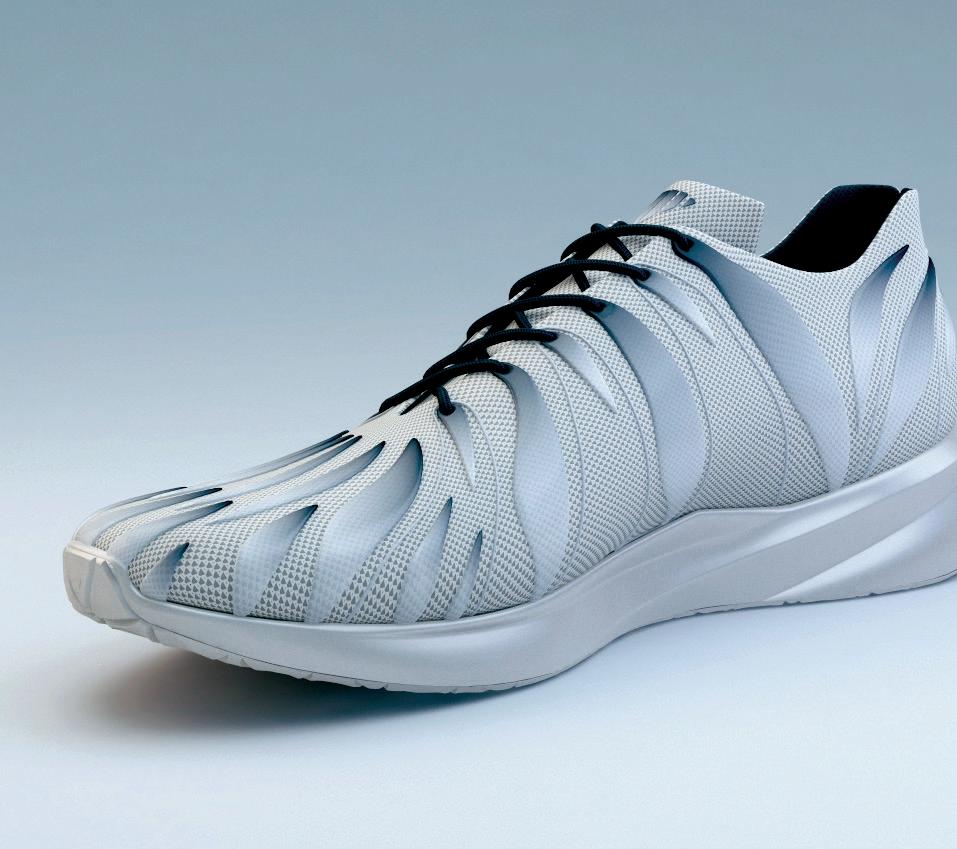automotive & rail
THE FUNDAMENTALS WORDS: LAURA GRIFFITHS
T
he feats of additive manufacturing (AM) in the automotive industry are welldocumented. From Formula 1 parts to tooling for mass production lines, metals to polymers, track to off-track, there isn’t a pocket of the industry that isn’t using 3D technologies in some way. So when AM pioneer 3D Systems set out its roadmap following the induction of CEO Jeff Graves last year, it came as no surprise that the company selected transportation and motorsports as the focus of one of its newly established industrial teams.
side, [..] given the prevalence of EV and hybrid and all the advanced propulsion systems that are coming into the market.” In metals, Baughey points to thermodynamic and fluid management applications where the design freedoms afforded by AM are allowing components like heat exchangers and hydraulic accumulators to be packaged more efficiently. There are also metal structural applications where lightweighting and conserving mass are typically the goal. But, as Baughey explains, the reasons behind that are much more complex.
“Transportation and motorsports has been a big piece of 3D Systems from its inception,” Kevin Baughey, Segment Leader, Transportation and Motorsports at 3D Systems, told TCT. “We talked to our Applications Engineers and I was really taken aback by the expertise that they had in sitting in with the companies and teams within the segment.”
“When you look at the science behind it, there's static forces, dynamic forces that are being managed,” Baughey elaborated. “In many cases, the lightweighting is what you're achieving but understanding why you're achieving it is important. Sometimes it's more mass management than just pure lightweighting. Sometimes it's ‘can we lower the centre of gravity or shift the centre of gravity in certain areas and take From those initial conversations, breaking advantage?’ Another thing is the inertia of down current industry applications and it. A lot of additive is being applied to mass challenges, two key areas emerged. One motion components that are dynamically was productivity and efficiency within rotating or shifting back and forth and existing use cases. The other was around taking out that inertia takes out all of the “advancing the science.” efficiency losses, as well as the durability. [...] The key thing is looking beyond just the “The folks that we were looking at in typical term of lightweighting and looking those areas were really looking at the at the fundamental sciences that are being fundamental science and engineering applied to solve problems.” to solve problems,” Baughey explained. “That's pretty typical in Formula One Thanks to innovations in drivetrain, because they're on that advanced edge autonomy and electric vehicles, the but we're also seeing [it] in the consumer automotive industry is evolving. Because of that, Baughey says the fundamental architecture of a
vehicle is now also being challenged. Rather than doing things the way they’ve always been done (“We weren't fundamentally just rolling out a blank sheet of paper very often,” Baughey recalls of his past experience working in systems engineering and vehicle programme management.), now it’s about “getting down to the math” to understand the problems the industry is trying to solve, and that’s applicable to not only advanced motorsport applications but is also trickling down into the consumer space. “To be quite frank, if the industry hadn't been disrupted through autonomous and EV and so on, this would probably not be advancing as fast as it is now and entering into the consumer side,” Baughey added. Recent material developments are also driving more advanced applications. In metals, a newly certified Scalmalloy high-strength aluminum alloy has been engineered for weight-efficient, load-bearing structural components including suspension brackets and energy and fluid management components, while Certified M789 is opening up possibilities for automotive parts with higher fidelity and thinner walls, like die inserts with conformal cooling, tire tread molds, drive train parts and axle components. It’s not just metals either, the recently added Accura AMX Rigid Black SLA resin has been adopted by TOYOTA Gazoo Racing to create long-lasting polymer production parts, while Baughey also notes some less obvious opportunities leveraging 3D Systems clear resins to manufacture interior automotive parts such as complex structures to pipe lighting through the vehicle. Baughey added: “Some of the advancements in materials have really taken them from what were traditionally prototypeuse materials, really into what an automotive lifecycle is going to look like.”
SHOWN: METAL STRUCTURAL COMPONENTS 3D PRINTED IN CERTIFIED SCALMALLOY ON A 3D SYSTEMS DMP FLEX 350
VOL 7 ISSUE 5 / www.tctmagazine.com / 09











